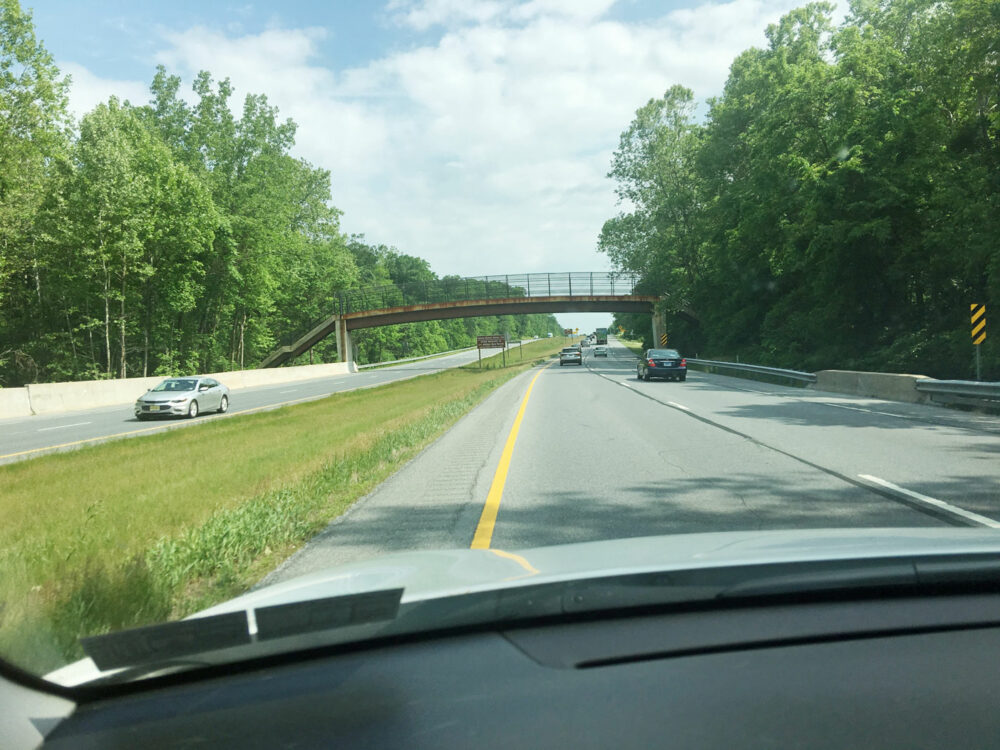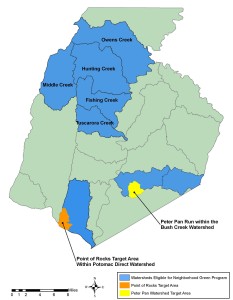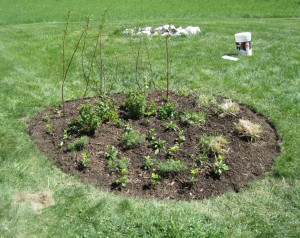BY James Rada, Jr.

Depending on who you might talk to and where you are along the U.S. Route 15 corridor that runs through the heart of the Catoctin Region, the highway could be referred to by at least nine different names and that’s not even counting the names of the business routes and auxiliary routes.
U.S. Route 15
This is the official name of the nearly 792-mile-long highway that runs from Waltersboro, South Carolina, to Painted Post, New York. It passes through South Carolina, North Carolina, Virginia, Maryland, Pennsylvania, and New York.
The Catoctin Banner region encompasses an approximate 15-mile stretch of the highway from the Pennsylvania/Maryland (Mason Dixon) Line south of Gettysburg, Pennsylvania to the area north of Frederick, Maryland.
Route 15 is one of the earliest U.S. Highways, opening in 1926. However, the original U.S. Route 15 did not enter Maryland. What is currently Route 15 from Frederick, to Harrisburg, Pennsylvania, was called U.S. 240 at the time. In 1927, U.S. 240 became the major route between Washington, D.C., and Frederick and Route 15 was extended from Leesburg north into Maryland through Point of Rocks, Maryland, and connected with U.S. 240 in Frederick, and U.S. 240 from Frederick north became U.S. Route 15.
Journey Though Hallowed Ground
From Gettysburg to Charlottesville, Va., U.S. 15 Route has been designated The Journey Through Hallowed Ground. It is a 180-mile long, 75-mile wide National Heritage Area that includes 9 presidential homes and sites, 18 national and state parks, 57 historic towns and villages, 21 historic homes, hundreds of Civil War battlefields and thousands of historical sites. The Journey Through Hallowed Ground bills itself as “Where America Happened.”
“With more history than any other region in the nation, the Journey Through Hallowed Ground was recognized by Congress as a National Heritage Area and offers authentic heritage tourism programs and award-winning educational programs for students of all ages,” according to HallowedGround.org.
James Monroe Highway
The northern portion of Route 15 in Virginia is also known as James Monroe Highway. Monroe was the fifth President of the United States who lived in Loudon County, Virginia at Oak Hill. To make matters confusing, the highway later changes from James Monroe Highway to James Madison Highway, named after the Virginian who was the fourth President of the United States.
Catoctin Mountain Scenic Byway
Along most of its nearly 38 miles through Maryland, Route 15 is known as the Catoctin Mountain Scenic Byway. This is because along that route, the highway runs along the east side of Catoctin Mountain. The break in this designation is from the U.S. Route 340 intersection to the Maryland Route 26 intersection north of Frederick. Route 15 was originally called Catoctin Mountain Highway beginning in 1974. The entire length of Route 15 in Maryland became a National Scenic Byway in 1999. It became the Catoctin Mountain Scenic Byway in 2005.
Jefferson National Pike
Route 15 and Route 340 run concurrently for a few miles in Frederick. This stretch of U.S. 15 is known as Jefferson National Pike. This is due to the fact that Route 340 through Frederick is also known as Jefferson Boulevard.
Frederick Freeway
From the Route 340 intersection to the MD 26 intersection, Route 15 is sometimes called the Frederick Freeway. This is the stretch of Route 15 that runs north-south through Frederick. It is the busiest section of Route 15 in Maryland.
115th Infantry Regiment Memorial Highway
The Maryland General Assembly designated Route 15 the 115th Infantry Regiment Memorial Highway. The 115th Infantry Regiment is a unit of the Maryland National Guard and it was a regiment of the U.S. Its history dates back to the Revolutionary War. The unit saw service in the Revolutionary War, the Civil War, World War I, and World War II. A large stone marker was erected in the median of the highway near Emmitsburg in 2006 to mark this designation.
Blue AND Gray Highway
The first of the two designations that Route 15 carries as it begins its trek through Pennsylvania is Blue and Gray Highway. This designation comes from the fact that the first 12 miles of Route 15 in Pennsylvania takes you from the Maryland border to Gettysburg, site of the most-famous battle in the Civil War.
Marine Corps League Highway
The Marine Corps League is made up of Marines and former Marines who support the United States Marine Corps. They are perhaps best known for the “Toys for Tots” Christmas toys program. Route 15 through much of Pennsylvania is named in their honor.
Business Routes and Offshoots
The above names cover the main route from Gettysburg to Virginia. However, Route 15 once passed through some small towns. As traffic increased, the decision was made to divert the highway around the towns and the original route through the town was designated Business Route 15.
Along the area The Catoctin Banner covers, this happens in Emmitsburg and Gettysburg. In Emmitsburg, Business Route 15 is known as North Seton Avenue and South Seton Avenue. In Gettysburg, the route is known along different sections as Emmitsburg Road, Steinwehr Avenue, Baltimore Street, Carlisle Street, and Old Harrisburg Road.
Route 15 also has five auxiliary routes in Maryland designated 15A, 15B, 15C, 15D, and 15G. These are all very small sections of road adjoining the main highway. The longest is less than .2-miles.
Call it what you will. U.S. Route 15 is still a beautiful highway to travel to see natural beauty and historic sites.

 This summer, it seems that it is either intensely raining or incredibly hot and humid. As a result of all this rain, the creeks and rivers are flowing higher than average. Much of the water is also brown and full of sediment. You don’t have to be a trout fisherman to understand that sediment and polluted stormwater can negatively affect fish and other aquatic organisms. You don’t even need to be a trout fisherman (but it helps!) to realize that the Catoctin Mountains of Frederick County are one of the few places in Maryland, besides Garrett County, where brook trout are successfully reproducing. The presence of brook trout in the Catoctin region and the obvious beauty of Frederick County inspire many residents to make efforts to conserve the area’s creeks and natural resources.
This summer, it seems that it is either intensely raining or incredibly hot and humid. As a result of all this rain, the creeks and rivers are flowing higher than average. Much of the water is also brown and full of sediment. You don’t have to be a trout fisherman to understand that sediment and polluted stormwater can negatively affect fish and other aquatic organisms. You don’t even need to be a trout fisherman (but it helps!) to realize that the Catoctin Mountains of Frederick County are one of the few places in Maryland, besides Garrett County, where brook trout are successfully reproducing. The presence of brook trout in the Catoctin region and the obvious beauty of Frederick County inspire many residents to make efforts to conserve the area’s creeks and natural resources. A rain garden is an excavated depression in the soil that is planted with vegetation. It allows rainwater runoff from impervious areas like roofs, driveways, and compacted lawn areas to infiltrate into the ground. Rain gardens should not allow water to pond in them for longer than 24 hours. Some people mistakenly believe that a rain garden will attract mosquitoes, but they actually drain too quickly. One of the most important things to remember about a rain garden is that conditions are going to range from very dry between storm events to saturated during and following storms. There are many different species of plants that can grow well in a rain garden, but the range of wetness and the well-drained sandy soils that are used to create the garden mandate that species need to be carefully considered when choosing optimal species for success.
A rain garden is an excavated depression in the soil that is planted with vegetation. It allows rainwater runoff from impervious areas like roofs, driveways, and compacted lawn areas to infiltrate into the ground. Rain gardens should not allow water to pond in them for longer than 24 hours. Some people mistakenly believe that a rain garden will attract mosquitoes, but they actually drain too quickly. One of the most important things to remember about a rain garden is that conditions are going to range from very dry between storm events to saturated during and following storms. There are many different species of plants that can grow well in a rain garden, but the range of wetness and the well-drained sandy soils that are used to create the garden mandate that species need to be carefully considered when choosing optimal species for success.